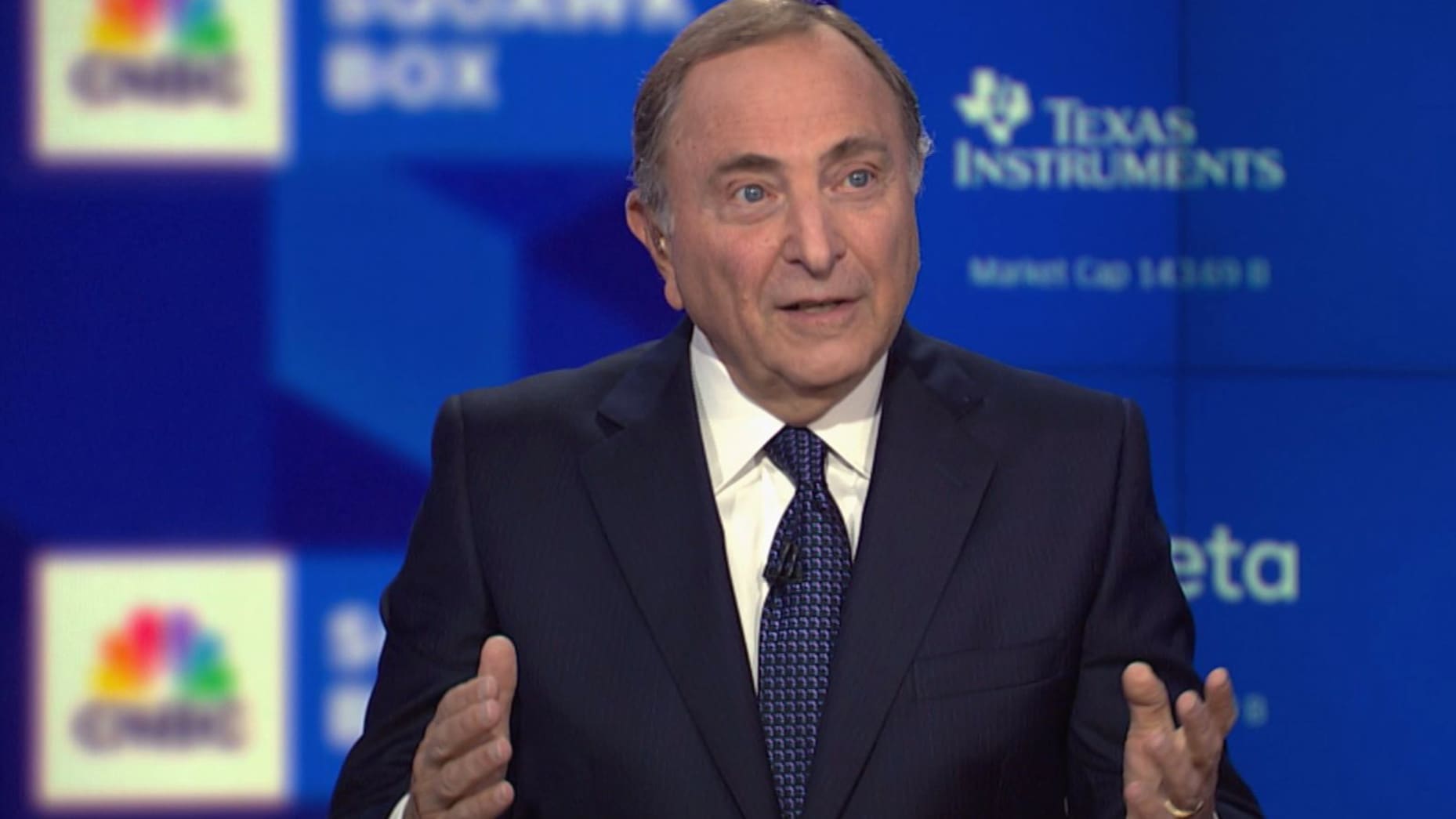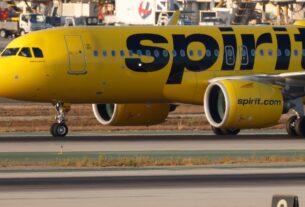NHL commissioner Gary Bettman expects the 2026 Milan Winter Olympics to mark a turning point for the league, with the return of its players to the Games after more than a decade away. He framed the decision as a careful balance of advantages and drawbacks, emphasizing that rejoining one of the world’s most visible platforms was a strategic move for the league. Bettman shared these views during CNBC Sport and Boardroom’s Game Plan conference in Santa Monica, California, on a Tuesday, highlighting a broader shift in the league’s relationship with Olympic participation. The decision follows a historical arc: Bettman’s leadership since 1993, the start of Olympic participation in 1998, and the eventual halt after the 2014 Sochi Games. He underscored that the evolution of the sport business influenced the trajectory, including how the NHL and its players’ association approached the Olympics. While the upcoming Games are framed as an opportunity, Bettman also acknowledged the complexities and potential challenges that accompany a midseason interruption.
A look back at the NHL’s Olympic journey: from inception to hiatus
Before Gary Bettman’s tenure as commissioner, NHL players did not participate in the Olympics. Bettman’s decision to engage the Olympics was inspired by observing the NBA’s experiences, which demonstrated a significant impact on a league’s profile and global interest. This realization catalyzed a collaborative effort between the NHL and the NHL Players’ Association to permit participation beginning with the 1998 Nagano Games. The league’s involvement persisted through the early 2010s, bolstering the profile of hockey on the international stage and linking national team pride with professional competition. Yet after the 2014 Winter Games in Sochi, the players’ Olympic participation paused, a pause Bettman described as reflective of broader shifts in the business of the league and the sports industry as a whole.
The pause did not come without downside. Bettman described the Olympic experience as “a bit of a mixed bag.” While participation brought visibility and prestige, it also presented practical hurdles. The league faced disruptions such as a two-week shutdown in play, and teams often struggled to manage player availability and promotional rights during the Games. Bettman explained that teams sometimes treated players as “invited guests,” and that the league and its clubs did not have control over promotional opportunities or the rights to market the Olympic participants. These constraints highlighted the misalignment between Olympic participation and the NHL’s control over its own branding and operations, complicating the league’s business logic during the Olympic window.
The decision to re-engage with the Olympics also intersected with broader competitive dynamics. The NHL faced a scenario in which a large share of its rosters could be drawn into Olympic duty, creating logistics and competition-management challenges for teams with deep playoff ambitions and tight schedules. The evolving nature of the sport’s business, the demands of global media, and the imperative to maximize league and player value all weighed on the decision-making process. In this context, the NHL and the NHLPA’s approach to the Olympics has continually evolved, balancing the desire for elite competition and national pride with the practical realities of running a modern professional league.
Over time, the league’s stance on Olympic participation came to reflect a nuanced calculus: weighing the prestige and developmental benefits of best-on-best play against the operational headaches and the financial implications of pausing the schedule. The evolution of the relationship with the IOC began to take shape through a new agreement that sought to refine the terms of collaboration, address commercial considerations, and improve living conditions for players while they are at the Games. The aim was to create a framework that could sustain participation while mitigating some of the frustrations that had accompanied earlier Olympic experiences. Bettman’s remarks emphasize that this strategic alignment is about more than a one-off event; it signals a broader commitment to integrating Olympic competition into the NHL’s long-term growth strategy.
The IOC agreement: commercial terms, operations, and player welfare
Central to Bettman’s discussion is the NHL-IOC arrangement that accompanied the decision to return to Olympic play. The new deal with the IOC adjusts several aspects of how the league and players participate in the Games, with a particular focus on commercial arrangements and the living conditions of players during the event. In practical terms, the agreement aims to create a more favorable framework for the teams and players involved, addressing some of the constraints that had previously limited the league’s ability to leverage Olympic participation for branding and business development. By upgrading the players’ living conditions at the Games, the agreement seeks to improve the overall experience for the athletes, recognizing the demands of competing at a high level while managing the realities of international competition and travel.
From Bettman’s perspective, one of the most important elements of the new arrangement is the recalibration of how the NHL and its players can participate in and benefit from Olympic competition. The partnership with the IOC is designed to ensure that the players’ participation aligns more closely with the league’s operational capabilities and commercial objectives. While the league and the players’ association had previously faced challenges related to promotional rights, the revised terms represent a step toward a more harmonious and productive collaboration. The changes are aligned with a broader objective: to preserve the integrity of the NHL’s brand while maximizing the visibility and prestige that come with Olympic participation. Bettman highlighted that these improvements were a key driver behind the decision to return to the Olympics, signaling a more mature and strategic approach to international competition.
In addition to the commercial framework, the agreement places emphasis on the players’ welfare at the Games. Improving living conditions is presented as not only a logistical improvement but also a fairness issue—ensuring that athletes can focus on performance and national representation without undue hardship. Bettman stressed that the changes respond to a central message from players who want to compete at the highest level while feeling supported and protected during a demanding international event. The improved conditions are part of a holistic effort to create an environment that sustains elite performance, minimizes avoidable distractions, and fosters a sense of unity and purpose among players who choose to represent their countries on the global stage. In this context, the IOC agreement is framed as a critical enabler of the return to Olympic competition.
The broader commercial and organizational implications of the IOC deal extend beyond immediate logistics. The revised terms are intended to harmonize the league’s business objectives with the opportunities presented by unprecedented international exposure. By creating a more coherent framework for participation, the league seeks to unlock the potential for enhanced sponsorship, international fan engagement, and long-term brand value. Bettman’s comments indicate that the changes are not merely operational tweaks but a strategic recalibration of how the NHL interacts with the Olympic platform. The goal is to establish a sustainable model that can support regular participation by NHL players in future Games, including the 2026 Milan event and beyond, while maintaining the league’s competitive and financial health.
The players’ drive to represent their countries: national pride and the value of competition
A recurring theme in Bettman’s remarks is the players’ strong desire to participate in the Olympics to play best-on-best on the international stage. He noted that this sentiment has deep roots in players’ history and sense of national representation, underlining the importance of national pride in the sport’s culture. The league’s leadership also pointed to recent examples of successful national-team competition as evidence of the positive impact that high-level international play has on players and fans alike. The 4 Nations Face-Off, a tournament held earlier in the year, showcased the compelling value of best-on-best competition and reinforced the belief that the Olympic stage is a natural extension of elite international rivalry. Bettman said that the players’ tradition and desire to represent their countries made the Olympic opportunity particularly meaningful, reinforcing the sense that Olympic participation is about more than personal or team branding—it is a celebration of national identity and hockey excellence.
In articulating the rationale for rejoining the Olympics, Bettman highlighted the broader implications for the sport’s development and global reach. When players compete on a national stage, the sport gains exposure to new audiences and potential fans who may not follow the NHL closely year to year. This visibility can translate into greater interest in hockey programs, youth development, and international partnerships that benefit the sport at multiple levels. Bettman’s stance emphasizes that the Olympic experience is not simply a one-time event; it is a recurring opportunity to showcase top-tier hockey, attract new audiences, and strengthen the sport’s profile around the world. The emotional and symbolic resonance of players representing their countries complements the competitive appeal, lending a sense of urgency and purpose to the league’s decision to participate again.
The relationship between national pride and professional competition also has practical implications for franchise value and talent retention. When players have the chance to compete for their nations, it can heighten their personal motivation and commitment to their craft, which in turn can influence performance and fan engagement upon returning to the NHL. Bettman’s comments imply that this dynamic contributes to the overall value proposition of Olympic participation for the league. The cross-pollination between international play and league play can stimulate strategic thinking among players and coaches about style, systems, and tactics, enriching the sport at all levels. The 4 Nations Face-Off example serves as a tangible demonstration of how high-caliber international competition can energize the hockey ecosystem, validating the decision to re-enter Olympic competition and signaling potential long-term benefits for players, teams, and fans alike.
Scheduling, disruption, and the question of 2030
Bettman did not shy away from acknowledging that Olympic participation introduces scheduling complexities. The NHL will pause play for nearly two weeks during the Games, a disruption that can complicate standings, injuries, trades, and team rhythm. He described participating in the Olympics as “not without its difficulties,” signaling a realistic assessment of the operational trade-offs involved. The possibility of a midseason disruption affects not only teams and players but also the broader business ecosystem, including broadcasters, sponsors, and fans who plan around the NHL schedule. Bettman’s careful framing suggests that while the interruption is challenging, the potential benefits in visibility, talent development, and fan engagement could offset the costs over time.
Looking ahead to the 2030 Games, Bettman noted that the NHL had not yet formally guaranteed its players’ participation. This ambiguity reflects the ongoing negotiation and planning required to balance long-term league strategies with the realities of international competition and scheduling. Yet he also expressed a measured optimism: on balance, the decision to participate should be worth the disruption in the eyes of the league, the players, and the global audience. The tension between immediate operational challenges and long-term strategic gains is a central theme in Bettman’s outlook. The NHL’s approach to 2030 will likely hinge on the perceived value of continued Olympic exposure, the strength of the IOC agreement, and the evolving dynamics of broadcast and sponsorship landscapes. Bettman’s candid stance suggests a willingness to accept short-term pain for potential long-term gain, while recognizing the need for ongoing evaluation and flexibility as circumstances change.
In addition to the logistical considerations, Bettman’s discussion points to a broader strategic framework in which Olympic participation is viewed as part of the NHL’s ongoing evolution. The league’s willingness to recalibrate its relationship with the IOC indicates a commitment to leveraging international competition to support the league’s growth, brand strength, and global footprint. The 2026 Milan Games are seen not only as a return for players but as a proving ground for how the NHL can optimize participation, manage disruption, and maximize the positive externalities of Olympic exposure. As the league continues to navigate the complexities of international competition, Bettman’s remarks emphasize a pragmatic approach that prizes both competitive excellence and structural improvements that benefit players and teams.
The business and media context: visibility, branding, and the evolving landscape
The Olympics have long served as a global platform that amplifies a sport’s visibility beyond its domestic market. Bettman’s remarks imply that re-engaging with the Games is a strategic move to capitalize on this heightened exposure and the opportunity to showcase top-tier hockey to a worldwide audience. The renewed IOC agreement, with its emphasis on improving players’ living conditions and refining commercial terms, is framed as a critical enabler of more effective and sustainable Olympic participation. In this context, the league’s return to Olympic competition is framed as a multi-faceted initiative that seeks to align on-ice performance with off-ice branding, sponsorship opportunities, and fan engagement across multiple markets.
The broader media environment also influences the decision to participate. International coverage, streaming opportunities, and global broadcasting interest can expand the sport’s reach and attract new fans, particularly in regions where hockey has been growing but has yet to reach a tipping point in popular culture. Bettman’s comments imply a recognition that the Games can serve as a catalyst for growth, generating momentum that carries into the NHL season and related business activities. The alignment between the league’s strategic goals and the IOC’s evolving framework suggests a coordinated effort to maximize the long-term value of Olympic participation, while maintaining the league’s governing principles, competitive integrity, and financial health.
As the NHL weighs the trade-offs, the organization is likely to consider how Olympic participation intersects with other priorities, including player development, international scouting, and the ongoing evolution of the league’s media landscape. The decision to rejoin the Games is presented as part of a broader push to modernize the sport’s commercial model, foster sustainable growth, and reinforce the sport’s appeal to fans around the world. Bettman’s framing reflects a forward-looking perspective: embracing Olympic competition not just as a one-off spectacle, but as a strategic lever for the NHL’s ongoing expansion, value creation, and relevance in a rapidly changing global sports marketplace.
Conclusion
Gary Bettman’s comments at the Game Plan conference in Santa Monica articulate a clear, strategic rationale for the NHL’s return to Olympic participation in Milan 2026. By balancing the perceived benefits—heightened visibility, strong national pride, and a more favorable commercial framework—with the operational realities of a midseason pause and the uncertainties surrounding 2030, Bettman presents the move as a thoughtful evolution in the league’s approach to international competition. The new IOC agreement, which enhances living conditions for players and refines commercial terms, is positioned as a key enabler of this plan, aligning the interests of players, teams, and the broader hockey ecosystem. The renewed emphasis on players’ desire to compete on the world stage, reinforced by successful national-team formats like the 4 Nations Face-Off, signals a renewed confidence in the value of best-on-best international play and its potential to elevate the sport’s profile globally. While challenges remain, including the timing of a two-week disruption and the uncertain path to 2030, Bettman’s outlook remains cautiously optimistic: the long-term benefits—greater exposure, enhanced fan engagement, and stronger international partnerships—will likely outweigh the short-term costs for the NHL, its players, and its fans.


